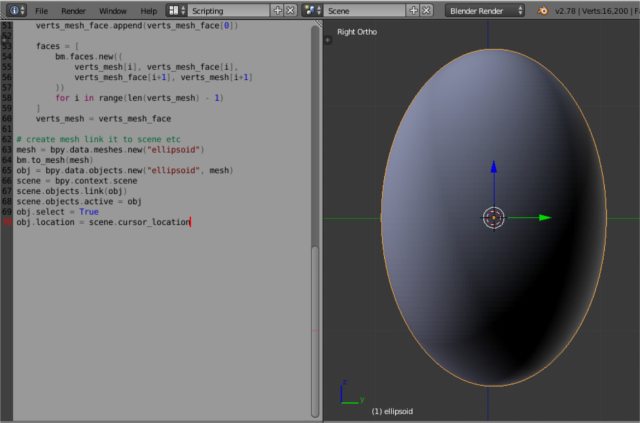This python module has been created by Andrew Kuchling and now maintained by Dwayne C. Litzenberger.
Let's install under Windows 10 OS using Command Prompt (Admin) shell.
C:\WINDOWS\system32>cd ..
C:\Windows>cd ..
C:\>cd Python27\Scripts
C:\Python27\Scripts>pip install pycrypto
Requirement already satisfied: pycrypto in c:\python27\lib\site-packagesC:\Python27>python.exe
Python 2.7.13 (v2.7.13:a06454b1afa1, Dec 17 2016, 20:42:59) [MSC v.1500 32 bit (Intel)] on win32
Type "help", "copyright", "credits" or "license" for more information.
>>> import Crypto
>>> dir(Crypto)
['__all__', '__builtins__', '__doc__', '__file__', '__name__', '__package__', '__path__',
'__revision__', '__version__', 'version_info']
>>> help(Crypto)
Help on package Crypto:
NAME
Crypto - Python Cryptography Toolkit
FILE
c:\python27\lib\site-packages\crypto\__init__.py
DESCRIPTION
A collection of cryptographic modules implementing various algorithms
and protocols.
Subpackages:
Crypto.Cipher
Secret-key (AES, DES, ARC4) and public-key encryption (RSA PKCS#1) algorithms Crypto.Hash
Hashing algorithms (MD5, SHA, HMAC)
Crypto.Protocol
Cryptographic protocols (Chaffing, all-or-nothing transform, key derivation
functions). This package does not contain any network protocols.
Crypto.PublicKey
Public-key encryption and signature algorithms (RSA, DSA)
Crypto.Signature
Public-key signature algorithms (RSA PKCS#1)
Crypto.Util
Various useful modules and functions (long-to-string conversion, random number
generation, number theoretic functions)
PACKAGE CONTENTS
Cipher (package)
Hash (package)
Protocol (package)
PublicKey (package)
Random (package)
SelfTest (package)
Signature (package)
Util (package)
pct_warnings
DATA
__all__ = ['Cipher', 'Hash', 'Protocol', 'PublicKey', 'Util', 'Signatu...
__revision__ = '$Id$'
__version__ = '2.6.1'
VERSION
2.6.1The first example comes with encrypting and decrypt message based one key.
The key also needs to be one encryption key and fix to key32.
The iv will not be specified by the user, it will be generated and then encrypted with RSA.
NEVER make the IV constant and unique, it must be unique for every message.
Let's see the example source code:
from Crypto.Cipher import AES
from Crypto import Random
def encrypt(key32,message):
cipher=AES.new(key32,AES.MODE_CFB,iv)
msg=cipher.encrypt(message)
print(msg)
return msg
def decrypt(key32,msg):
dec=AES.new(key32,AES.MODE_CFB,iv)
return dec.decrypt(msg).decode('ascii')
if __name__=='__main__':
global iv
iv=Random.new().read(AES.block_size)
key='free-tutorials.org'
key32 = "".join([ ' ' if i >= len(key) else key[i] for i in range(32) ])
message='another website with free tutorials'
enc =encrypt(key32, message)
print enc
print(decrypt(key32,enc))ᄚ Cᆪ゚2 ᄊÕ|ýXÍ ᄇNäÇ3ヨ゙Lマᆱuï: ù メNᄚm
ᄚ Cᆪ゚2 ᄊÕ|ýXÍ ᄇNäÇ3ヨ゙Lマᆱuï: ù メNᄚm
another website with free tutorials
Another more simplistic example:
from Crypto.Cipher import AES
from Crypto import Random
key = b'Sixteen byte key'
iv = Random.new().read(AES.block_size)
cipher = AES.new(key, AES.MODE_CFB, iv)
msg = iv + cipher.encrypt(b'Attack at dawn')>>> print key
Sixteen byte key
>>> print iv
ÔÄ▀DÒ ÕØ} m║dÕ╚\
>>> print cipher.encrypt(b'Attack at dawn')
åÌ£┴\u\ÍÈSÕ╦╔.>>> from Crypto.Hash import MD5
>>> MD5.new('free text').hexdigest()
'be9420c1596a781119c53a9933a8234f'>>> from Crypto.PublicKey import RSA
>>> from Crypto import Random
>>> rng = Random.new().read
>>> RSAkey = RSA.generate(1024, rng)
>>> public_key = RSAkey.publickey()
>>> print public_key
<_rsaobj e="" n="" x3650b98="">
>>> enc_data = public_key.encrypt('test data', 32)[0]
>>> print enc_data
H +îÕÊ ÙH:?ª2S½Fã0á! f¬ = ·+,Í0r³┐o·¼ÉlWy¿6ôên(£jê¿ ╦çª|*°q Ò4ì┌çÏD¦¿╝û╠╠MY¶ïzµ>©a}hRô ]í;
_[v¸¤u:2¦y¾/ ²4R╩HvéÌ'÷Ç)KT:P _<! D
>>> dec_data = RSAkey.decrypt(enc_data)
>>> print dec_data
test data 